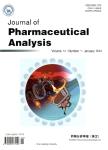Tissue-based metabolite profiling and qualitative comparison of two species of Achyranthes roots by use of UHPLC-QTOF MS and laser micro-dissection
Tissue-based metabolite profiling and qualitative comparison of two species of Achyranthes roots by use of UHPLC-QTOF MS and laser micro-dissection作者机构:Center for Excellence in Post-Harvest Technologies The North Carolina Research Campus School of Chinese Medicine Hong Kong Baptist University
出 版 物:《Journal of Pharmaceutical Analysis》 (药物分析学报(英文版))
年 卷 期:2018年第8卷第1期
页 面:10-19页
核心收录:
学科分类:10[医学]
主 题:Achyranthes aspera Achyranthes bidentata Steroids Glycosides Saponins
摘 要:Achyranthes bidentata and Achyranthes aspera are saponin and steroid rich medicinal plants, used extensively for therapeutic treatments in Traditional Chinese Medicine(TCM) and Ayurveda. A. bidentata is reported to be one of the rare and extensively exploited medicinal plant species that face the issue of being *** qualitative substitute with identical phyto-constituents contributing to similar composition and pharmacological benefits will help in reducing the burden of exploitation of the natural habitats of such *** the present study, a comparative metabolite analysis of the whole drug and specific tissues isolated by laser micro-dissection(LMD) was carried out for both the selected species, by use of ultra-high performance liquid chromatography-quadrupole time-of-flight mass spectrometry(UHPLC-QTOF MS). The results of the study indicate that the cortex and the medullary ray tissues are rich in their content of steroidal and saponin constituents such as(25 S)-inokosterone-20,22-acetonide, ginsenoside Ro, bidentatoside II and achyranthoside *** profiling of the whole tissues of both the species indicates presence of identical constituents. Thus,it is inferred that A. bidentata and A. aspera can be used as qualitative substitutes for each other.



